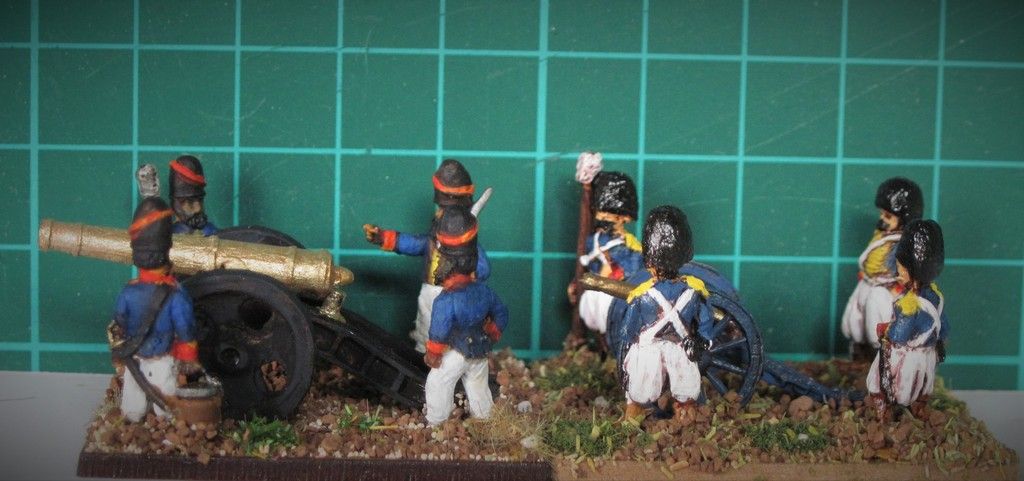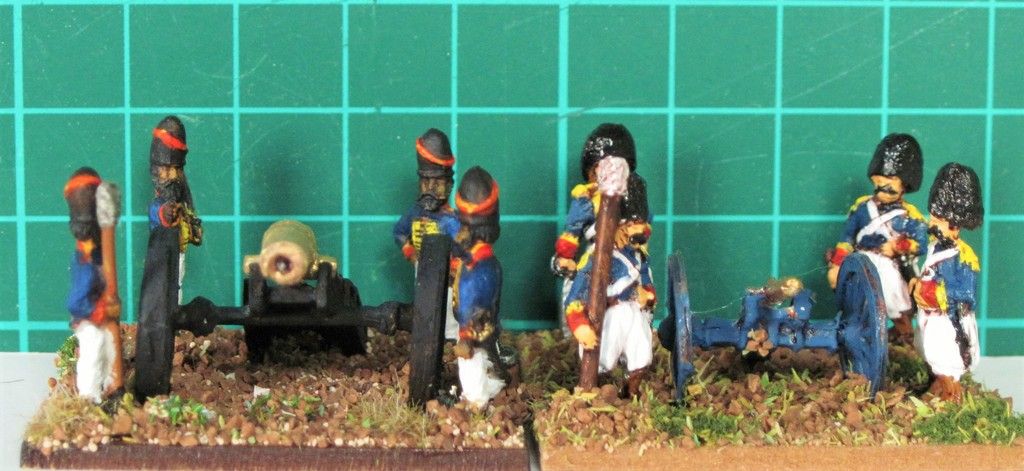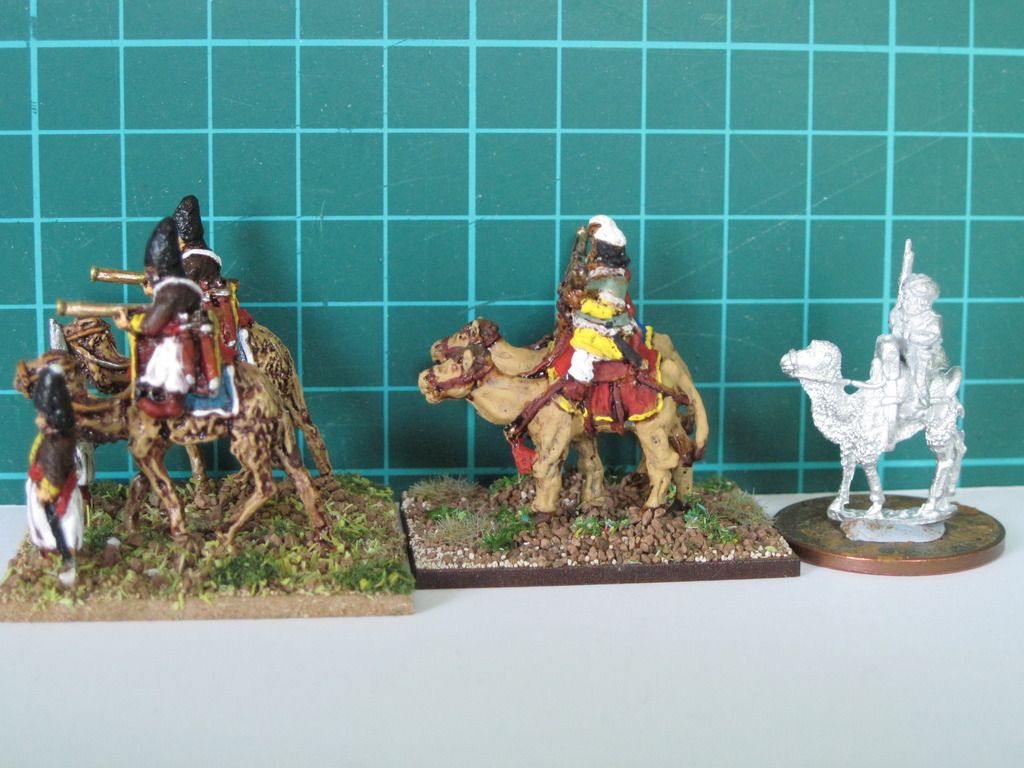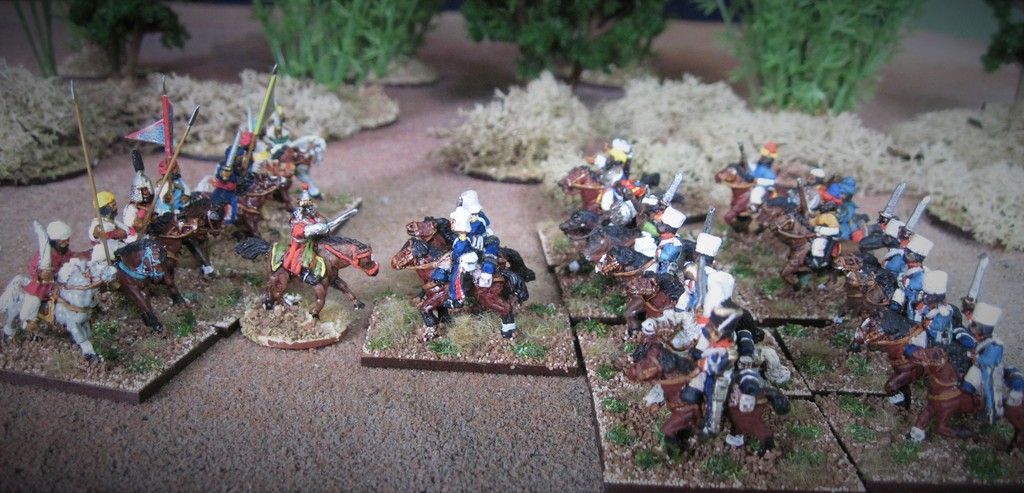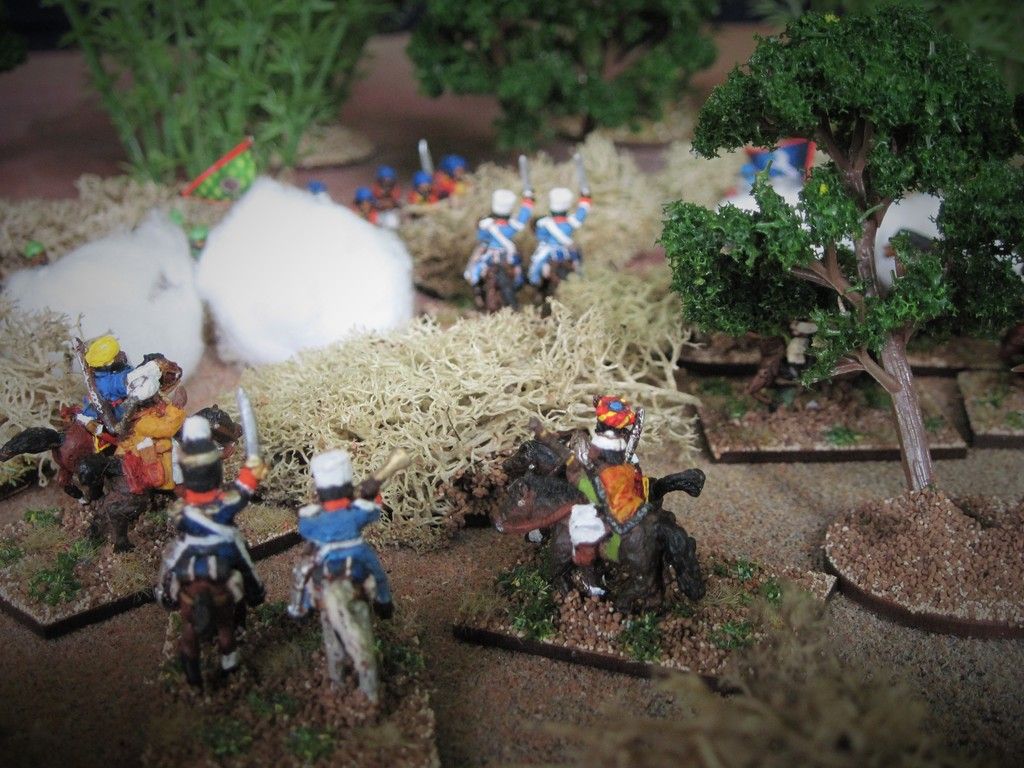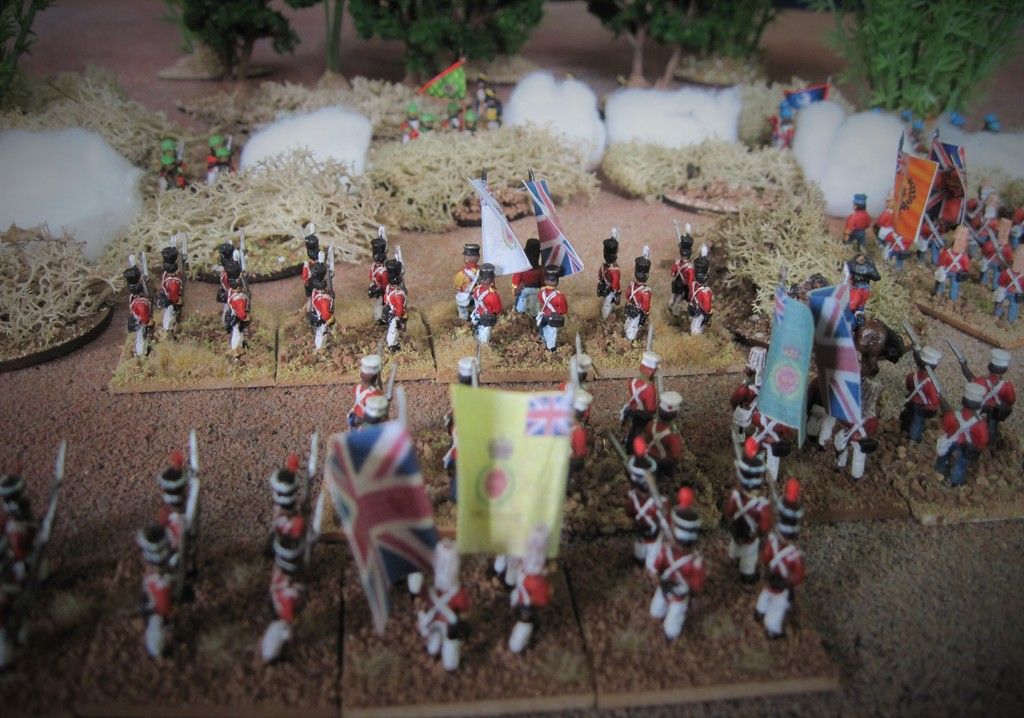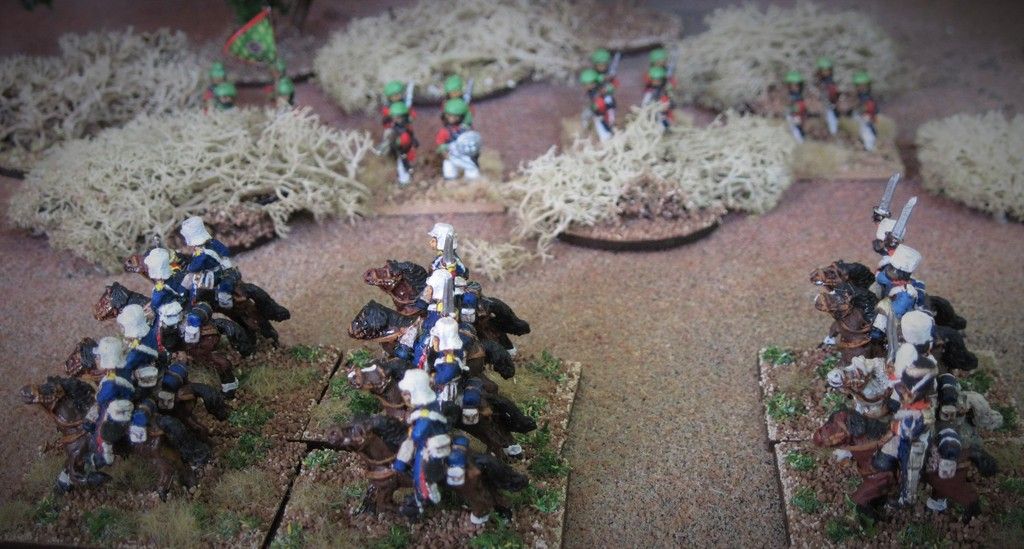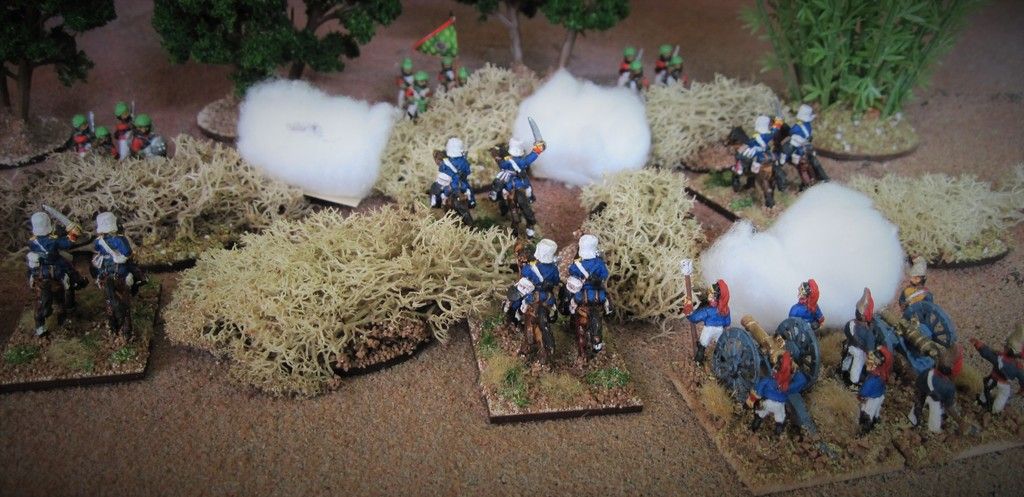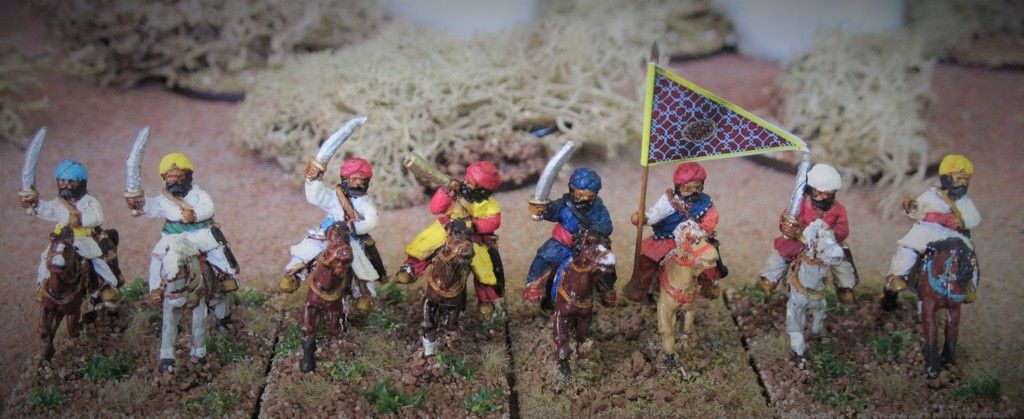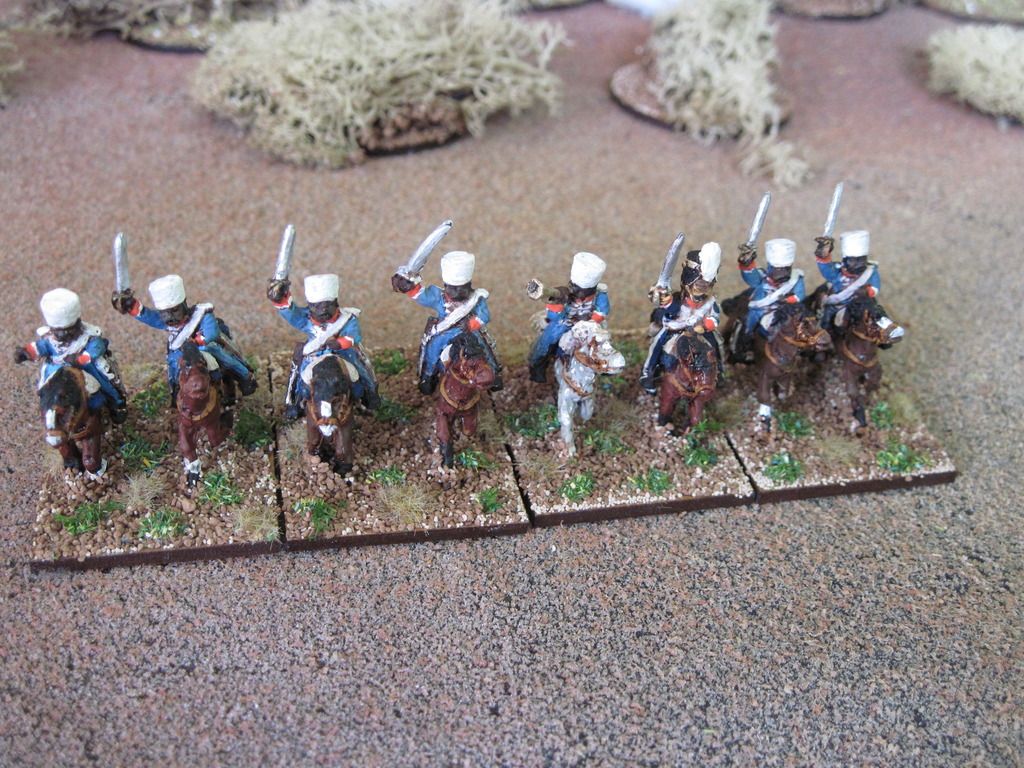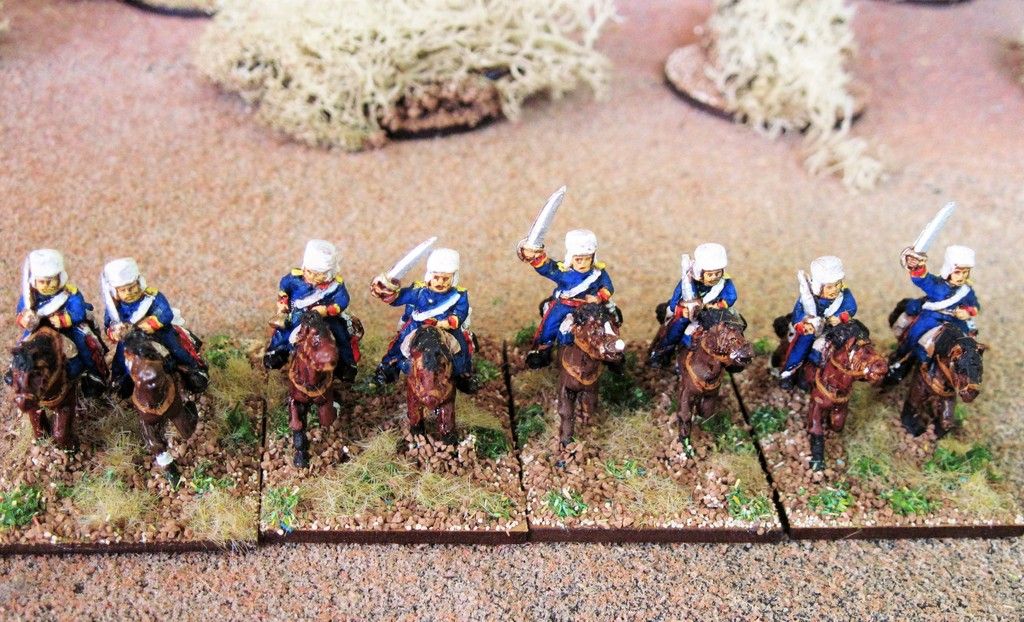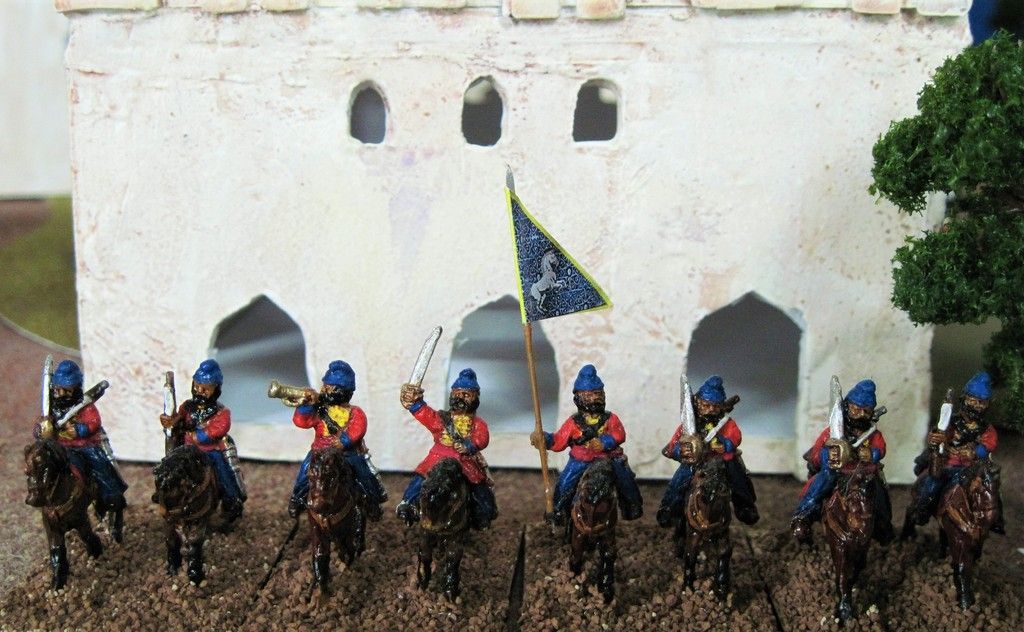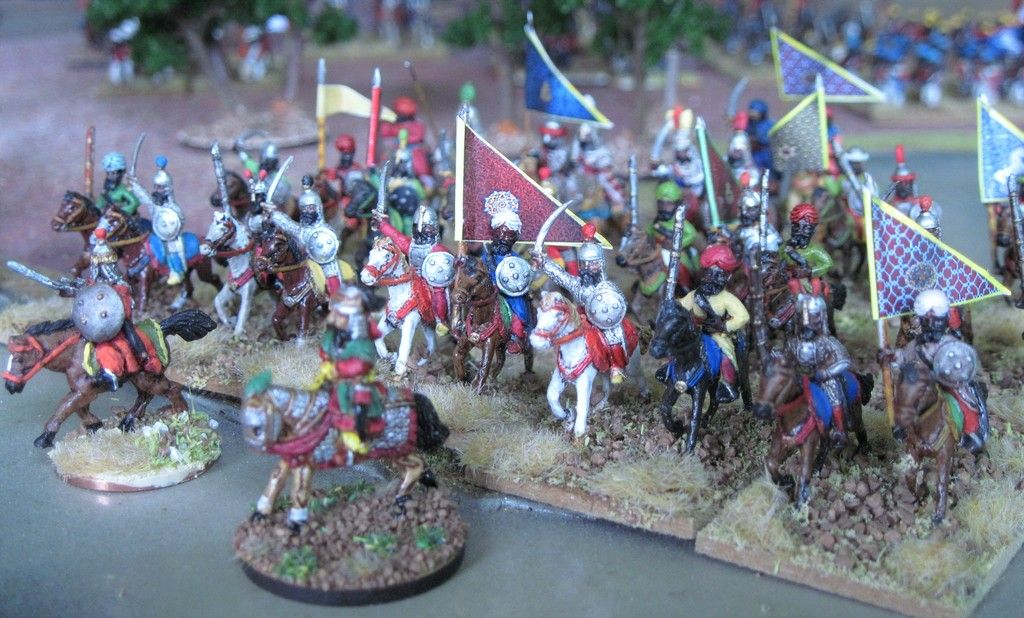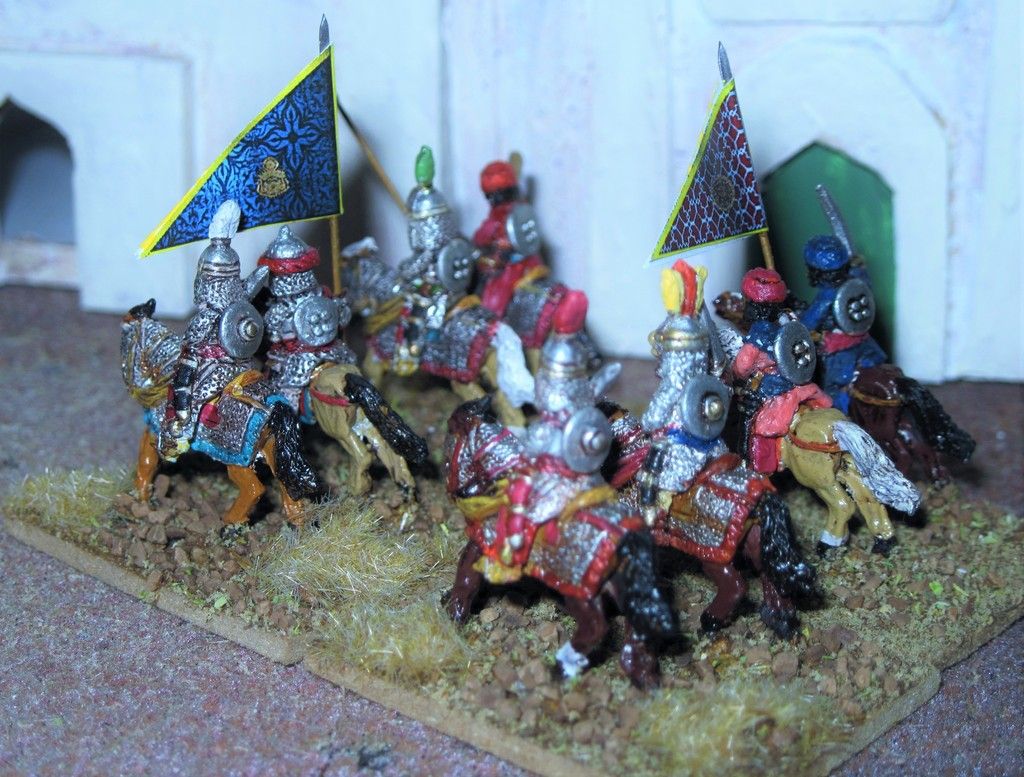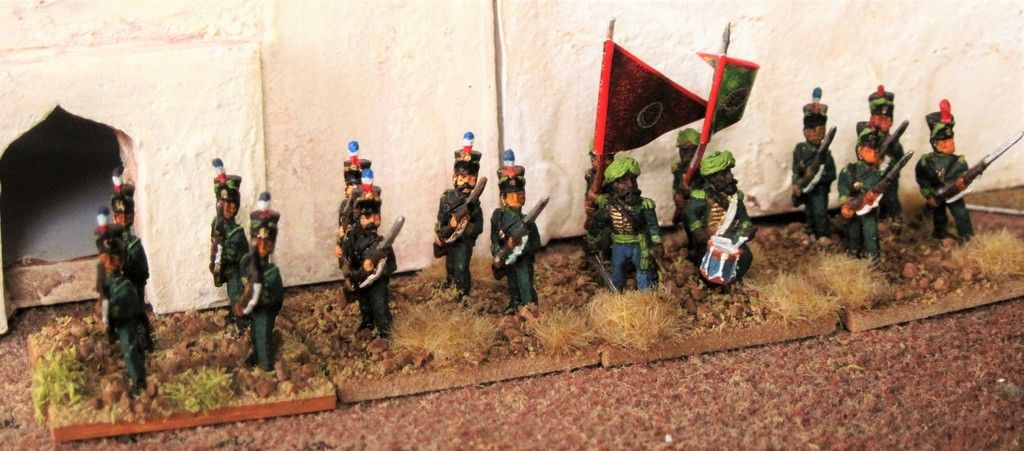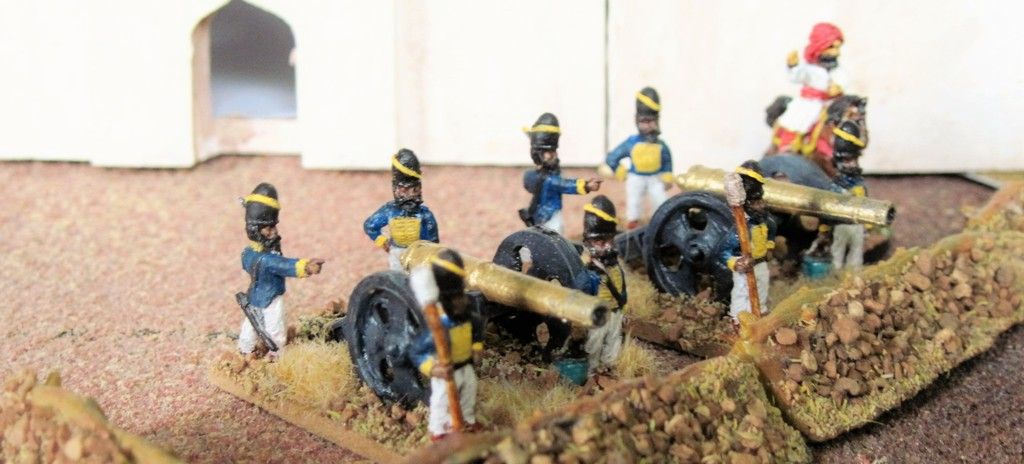We are going to look at some of what’s available in 15mm and for the regulars of the Khalsa that means QRF, Irregular and Black Hat. The photos can speak for themselves for those of you thinking of a Sikh collection. When we get to the irregulars we can spread the net a little wider.
The QRF are the 20? year old Steve Shaw sculpts - very elegant. Irregular are a recent range, good clean lines and as far as 15mm turbans go Ian Kay must be the prince of pugarees. Black Hat is the newest and most comprehensive range - great detail and lots of variety of figures.
QRF sell their infantry figures in packs of eight, Black Hat retail ten infantry and five command per pack respectively and Irregular sell individual figures. For cavalry QRF are four to a pack and Black Hat five with three for command. Prices at the time of writing are fairly similar.
The QRF are the 20? year old Steve Shaw sculpts - very elegant. Irregular are a recent range, good clean lines and as far as 15mm turbans go Ian Kay must be the prince of pugarees. Black Hat is the newest and most comprehensive range - great detail and lots of variety of figures.
QRF sell their infantry figures in packs of eight, Black Hat retail ten infantry and five command per pack respectively and Irregular sell individual figures. For cavalry QRF are four to a pack and Black Hat five with three for command. Prices at the time of writing are fairly similar.
Infantry
Let’s start with the Khalsa regular infantry and the good news is that the three ranges are compatible as we can see. There is no problem in mixing and matching any of these.
Artillery
The guns next. Here is a Black Hat cannon with a QRF crew next to an Irregular Persian gun and crew.
This substitution is because I do not yet have their Sikh one and the figures, apart from the hat, are very similar. Black Hat also offer two gun crews (Foot and Horse) and QRF have some nice guns - all work well together. The Black Hat cannon is a must have in my view and I keenly await their Sikh 6pdr.
For convenience let's do the camel gunners here as well.
Irregular Persians are standing in for their Indian ones, QRF Moghuls and the Black Hat Sikh. The latter is too small for me and does not have a camel gun. He would be OK with Peter Pig Sudanese Ansar and I think that is where he is going.
Next time we will look at the Khalsa cavalry and command figures.
QRF, Irregular and Black Hat
Artillery
The guns next. Here is a Black Hat cannon with a QRF crew next to an Irregular Persian gun and crew.
This substitution is because I do not yet have their Sikh one and the figures, apart from the hat, are very similar. Black Hat also offer two gun crews (Foot and Horse) and QRF have some nice guns - all work well together. The Black Hat cannon is a must have in my view and I keenly await their Sikh 6pdr.
For convenience let's do the camel gunners here as well.
Irregular Persians are standing in for their Indian ones, QRF Moghuls and the Black Hat Sikh. The latter is too small for me and does not have a camel gun. He would be OK with Peter Pig Sudanese Ansar and I think that is where he is going.
Next time we will look at the Khalsa cavalry and command figures.


